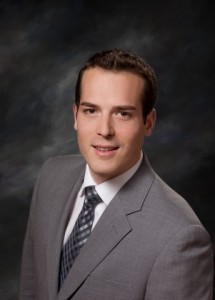It’s a small portable device that can save lives. Automated external defibrillators (AEDs) detect cardiac rhythms and deliver shocks to those under cardiac arrest, one of the leading killers of Canadians. But despite the high success rate of AEDs, public places in Ottawa are not required to have one on site.
While many public places in Ottawa are equipped with AEDs, they are not legally obligated in to do so. This leaves them with little to no responsibility if a person’s heart stops and there is no defibrillator around to save them.
As of April 2013, the City of Ottawa had a total of 370 public access defibrillators in public buildings. According to the data, which listed location, number and location on site, Rideau -Vanier had 28 publicly accessible defibrillators-more than any other ward in Ottawa.
Councillor of Rideau-Vanier Mathieu Fleury says he understands the importance of AEDs in public places. Before serving as councillor he worked for the City of Ottawa as a lifeguard supervisor and taught a defibrillator course.
“As a lifeguard I saw how crucial it was to not only have an AED on site but to have strong communication within the facility so everyone knew where it was,” Fleury says.
Of the 370 publicly accessible AEDs in Ottawa 70 per cent were located somewhere within the main entrance of the public building.
Fleury says one of the reasons his ward has the most public access defibrillators is because it is filled with government and recreation buildings.
“There are a lot of places in Rideau -Vanier like the Rideau Centre which on any given day have hundreds of people inside. Not having an AED would be extremely irresponsible,” he says.
About 40,000 Canadians experience sudden cardiac arrest each year- one every 12 minutes, according to the Heart and Stroke Foundation.
Public Information Officer of Ottawa Paramedics Jean-Pierre Trottier says since 85 per cent of cardiac arrests happen outside of hospitals, having an AED close by can make all the difference.
But despite these claims, there are currently no national guidelines as to how or where the devices should be kept. While many comply with Heart and Stroke regulations, others place the devices in less readily available places. For the city of Ottawa, this included the custodian hallways and basements of several public schools.
“The time between an onset of cardiac arrest and the use of an AED is the major determinant for how successful resuscitation attempts will be,” Trottier says. “That’s why we encourage facilities to place their defibrillators in an easily accessible place.”
The survival rate of a cardiac arrest victim decreases by up to 10 percent for every minute delay in defibrillation. After 12 minutes, the survival rate plummets to less than five per cent.
Councillor of Barrhaven Jan Harder says that although there is currently no legal requirement for public buildings to have an AED, the City of Ottawa has taken a proactive role.
“Ottawa has taken a leadership position and has funded the placement of defibrillators in many of their public buildings including all recreation facilities, arenas and pools,” she says.
Harder says that public access defibrillators have been used twice in Barrhaven this year. She says that the Heart Safe City program introduced in 2001 has saved 74 lives.
According to the data, Barrhaven (Ward 3) had one of the lowest numbers of total AEDs in 2013 with only eight in public buildings. Harder says they have added six more since April and that the number does not include the AEDs located with the Ottawa Fire Services, the Ottawa Police and the OC Transpo Special Constables in each ward.
The Ontario government has assigned almost $10 billion to placing the devices in publicly funded sports and recreation facilities as well as schools with extensive sports programs.
But like many others, Fleury thinks there is still more to be done.
“As much as we have training, the more people that are informed or educated for first aid response the better,” he says.
locations of public access defibrillators in Ottawa

